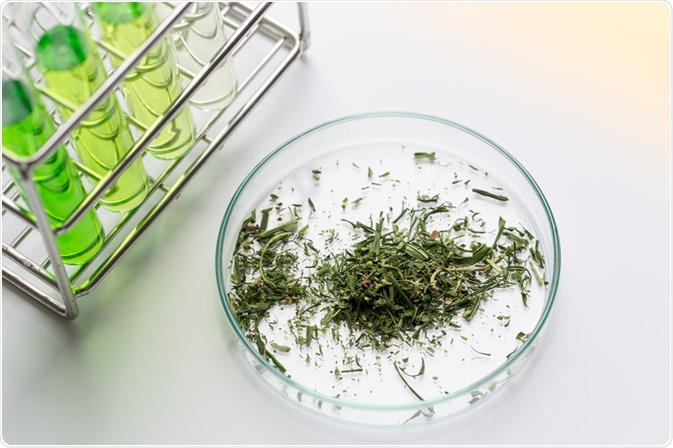Cannabinoids are a group of compounds that can be isolated from the marijuana plant. They have many applications within biomedical sciences and medicine. The properties of these compounds can be analyzed using various techniques, which are described here.
 Image Credit: Rattiya Thongdumhyu/Shutterstock.com
Image Credit: Rattiya Thongdumhyu/Shutterstock.com
What are cannabinoids?
Cannabinoid receptors
Cannabinoids are a group of bioactive molecules found in the marijuana plant (Cannabis sativa). Cannabinoids bind to a Gαi sub-type of G protein-coupled receptors (GPCRs) known as cannabis receptors. The two main cannabis receptors are CB1 and CB2.
CB1 and CB2 differ in their tissue expression patterns. This along with differential interactions with the different cannabinoids gives rise to different effects within the body.
CB1 receptors are located ubiquitously throughout the human body but are mostly concentrated in the central nervous system, which leads to psychoactive effects. CB2 receptors are only located in particular parts of the immune system.
Types of cannabinoids
There are over 100 different types of cannabinoids. All cannabinoids fall into one of the following three main categories:
- Endogenous cannabinoids
- Phytocannabinoids
- Synthetic cannabinoids
Endogenous cannabinoids are produced in the body and bind to CB1 and CB2 receptors. These affect the release of various neurotransmitters and are involved in inflammation, insulin sensitivity, and metabolism regulation.
Phytocannabinoids only occur naturally in the cannabis plant. THC, CBD, and cannabinol (CBN) are the most prevalent natural cannabinoids.
Synthetic cannabinoids do not occur naturally. They are mainly used during research and studies to gain insight into the action of cannabinoids and evaluate the benefits of clinical treatments. Synthetic cannabinoids are further broken down into classical cannabinoids, non-classical cannabinoids, hybrid cannabinoids, aminoalkylindoles, and eicosanoids.
Uses of cannabinoids
Cannabinoids are mainly used for anti-palliative effects and the two most widely studied cannabinoids are Tetrahydrocannabinol (THC) and Cannabidiol (CBD). THC can reduce the symptoms of neuropathic pain, spasticity, nausea, and anxiety. It has also been applied to treatments for multiple sclerosis and Parkinson’s disease.
CBD has been studied in clinical trials to for treating childhood epilepsy. Recently, a drug using CBD has been approved for two rare forms of childhood epilepsy. CBD and THC have also been used to reduce nausea and emesis resulting from chemotherapy or radiotherapy.
Cannabinoids have been used to target and kill tumor cells, during tests on in vitro tissues. THC, natural cannabinoids, synthetic cannabinoids, and several endocannabinoids have anti-cancer effects on lung carcinomas, skin carcinomas, and breast cancer.
Cannabinoid analysis techniques
Exploring cannabinoid analysis techniques
There are many methods that can be used to quantify the effects of cannabinoids. During cannabinoids analysis, the cannabinoid is dissolved in a solvent to be analyzed. The extraction techniques for the cannabinoids vary depending on the needs of the experiments, but the most commonly used solvent for cannabinoids is a 9:1 ratio of methanol/chloroform (% v/v). After extraction, cannabinoids are analyzed using various methods.
Ultrahigh-pressure liquid chromatography (UHPLC)-electrospray ionization (ESI) combined with tandem mass spectrometry can analyse the cannabinoids levels in the urine of individuals exposed to high levels of marijuana.
Other methods used to analyze cannabinoids include liquid or gas chromatography (LC or GC) combined with single quadruple mass spectrometry (MS) or tandem mass spectrometry. A high-performance liquid chromatography (HPLC) with diode-array detector (DAD) method is used to analyze the composition and effects of cannabinoids. This method is thought to produce more accurate results than LC-MS.
The varying solvent compositions, mass-to-solvent ratios, and extraction techniques between the different cannabinoid analysis techniques may lead to unreliable results. Therefore, it is important to validate the results.
Further Reading